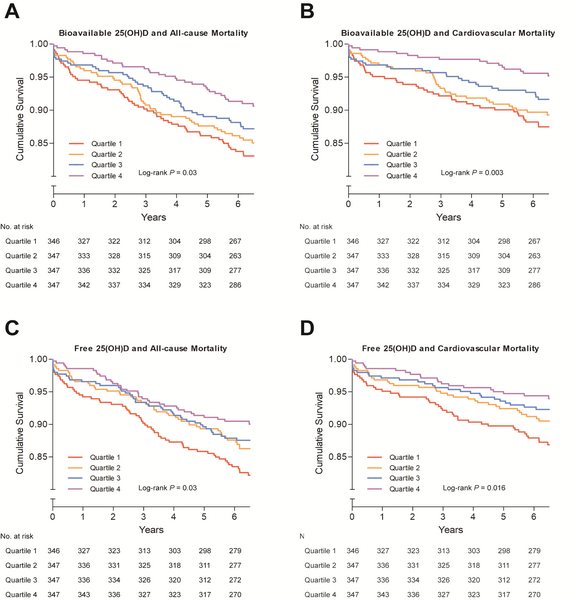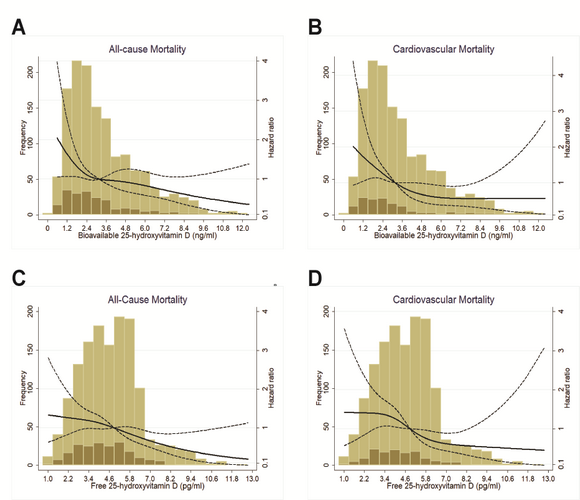Professor Wenhua Ling’s Team at School of Public Health Has Made a Progress in the Utilization of Vitamin D as a Prognostic Biomarker for Coronary Artery Disease
Source: School of Public Health
Written by: School of Public Health
Edited by: Wang Dongmei
Prof. Wenhua Ling’s team at School of Public Health, Sun Yat-sen University has published a research article entitled “Serum Bioavailable and Free 25-Hydroxyvitamin D Levels, but Not Its Total Level, Are Associated with the Risk of Mortality in Patients with Coronary Artery Disease” in Circulation Research on September 28, 2018. Two PhD students in Dr. Ling’s lab, Chao Yu and Hongliang Xue, are the co-first authors, while Prof. Wenhua Ling is the solo corresponding author of the article. Importantly, the journal has published an editorial commentary along with this article, composed by Dr. Courtney Premer and Dr. Ivonne H Schulman, entitled “Have We Been Measuring the Wrong Form of Vitamin D? Vitamin D as a Prognostic Biomarker for Coronary Artery Disease Mortality”.

Kaplan-Meier plots for all-cause mortality (A) and cardiovascular mortality (B) according to bioavailable 25-hydroxyvitamin D [25(OH)D] quartiles, and all-cause mortality (C) and cardiovascular mortality (D) according to free 25(OH)D quartiles among patients with coronary artery disease.

Multivariable-adjusted spline functions demonstrate the relation between bioavailable 25-hydroxyvitamin D and all-cause mortality (A) and cardiovascular mortality (B), and the relation between free 25-hydroxyvitamin D and all-cause mortality (C) and cardiovascular mortality (D). The histogram of the distribution of bioavailable or free 25-hydroxyvitamin D levels is also shown. Deaths were shown in dark brown column, and survivals were shown in light brown column.
Vitamin D is not strictly a fat-solution vitamin, rather it is the precursor of a steroid hormone that may be associated with the prognosis of coronary artery disease. Previous studies have been focusing mainly on the association between vitamin D deficiency and cardiovascular diseases, utilizing total 25-hydroxyvitamin D as the biomarker. Notably, in recent vitamin D supplementation clinical trials, only total 25-hydroxyvitamin D was utilized in the evaluation of vitamin D status. These investigations failed in the identification of the causality. The current study by Ling’s team utilized the novel vitamin D markers, including free as well as bioavailable 25-hydroxyvitamin D, to improve the accuracy in the determination of vitamin D status. To explore the potential association between vitamin D and the prognosis of coronary artery disease patients, the team measured several circulating vitamin D biomarkers at baseline of the Guangdong Coronary Artery Disease Cohort. With the median follow-up time of 6.7 years, they found that lower serum free and bioavailable 25-hydroxyvitamin D levels rather than total 25-hydroxyvitamin D level are independently associated with increased risk of mortality in patients with coronary artery disease. This study highlights that free and bioavailable 25-hydroxyvitamin D are better predictors for the prognosis of patients with coronary artery disease, and provides a new approach for conducting vitamin D supplementation trials.
Link to the article: https://www.ahajournals.org/doi/pdf/10.1161/CIRCRESAHA.118.313558
Link to the editorial commentary: https://www.ahajournals.org/doi/pdf/10.1161/CIRCRESAHA.118.313814